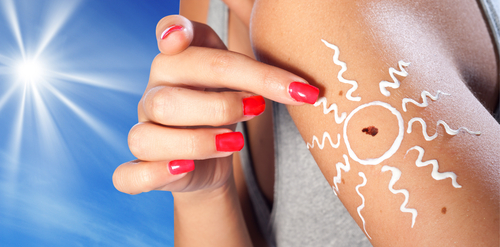-
- Stand in front of a large mirror, under bright light, and check every part of your skin, not just the places that are easy to see.
- Use a hand mirror to check the backs of your legs, the soles of your feet and the undersides of your arms. What to look for
For Non-Melanoma | For Melanoma |
|---|---|
| Smooth, pearly or translucent bumps that may bleed or crust over | Asymmetry in a mole—one half of the mole looks different than the other half |
| Flat red spots that are scaly, crusty or bleed easily | Border irregularity—the edges of a mole are ragged, blurred or notched |
| Smooth, shiny bumps that may look like a mole | Color—does the shade vary from one part of the mole to the other? |
| A patch of skin that looks like a scar on the face | Diameter—the mole is larger than a pencil eraser |
Firm, pearly bumps with tiny blood vessels in a spiderlike pattern | Evolving—A mole or skin lesion that looks different from the rest or is changing in size, shape or color |
Your doctor or dermatologist can confirm if the changes you find on your skin or in a mole is from cancer.

